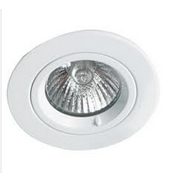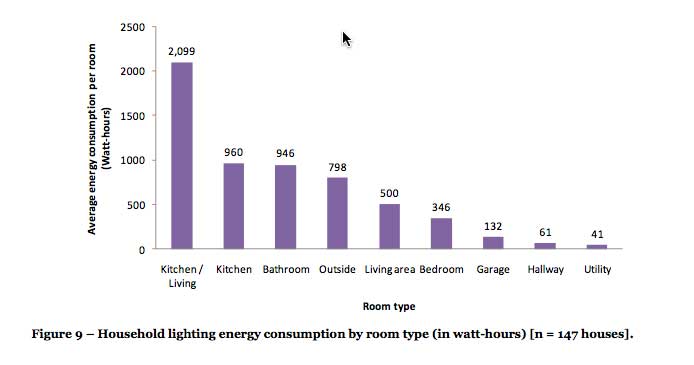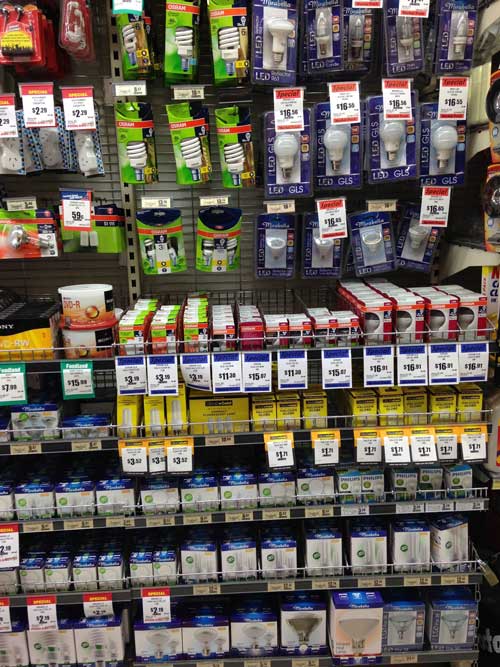Home > Energy Efficiency > LED Lighting
How to reduce your lighting bills to a few cents a day.
When I first started writing about energy efficiency way back in 2008, the first piece of advice I doled out was this: “Changing your globes should actually be a low priority compared to other energy efficiency measures you can take.”
Say what?!
Well, the thing is: back in 2008 when I said this, energy consumption surveys showed that lights accounted for just 7% of an average Aussie home’s energy use (gee, I love this pie chart):
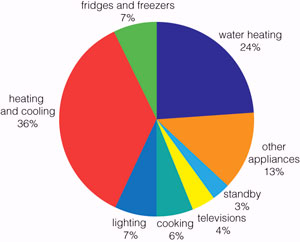
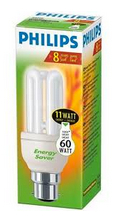
This meant that if you replaced all your globes in 2008 you’d typically shave about 5% off your bill. Not bad I suppose. But my concern was that the low quality light, and small savings might actually demoralize you and put you off energy efficiency for life.
We can’t have that! Energy efficiency can easily halve most folks bills for a very modest investment. Combine that with a solar power system, and you really are looking at tiny electric bills.
(My bill for example is about $1 per day for a family of 5 and 2 adults working from home full-time. Honestly – I actually enjoy getting my electricity bill these days.)
Anyway – let’s get back to the present day and your home’s lighting.
Two things have changed over the past 6 years or so which have completely reversed my advice. Those things are:
Downlights and the amazing improvement in LED Lighting Technology
Let’s start with those evil little downlights
It is exceedingly rare to find a new or renovated home that does not use recessed downlights for most of its lighting. People like the look of them, and it seems like they are here to stay.
But the thing about downlights is this: It takes a hell of a lot of them to light a room, and the standard halogens are almost criminally inefficient power guzzlers.
If you want proof of this, go and find one and touch it. If it has been on for more than about 60 seconds it will be insanely hot. That tells you that most of the electricity going into the sucker is being converted into heat, instead of light. Not good. Combine that with the fact that homes and rooms are generally getting larger and the result is that lighting energy as a proportion of residential energy use has gone through the roof.
From the data I can pull together, I estimate that, thanks to halogen downlights, a modern Aussie home now can use up to 30% of its power for lighting. For a 4+ person home that is a whopping 7kWh per day.
That means that if your home has halogen downlights you need to consider replacing them if you are to have any hope of smaller electricity bills.
Luckily, getting your lighting bills down by 80-90% is can be cheap and easy, and you don’t have to sacrifice the quality or brightness of the light any more. Hooray! Frankly I’m amazed anyone has any of those evil little halogen globes in 2015. The answer, of course, is modern LED technology.
LED technology to the rescue.
LED technology is now so good and so cost-effective that I strongly believe that you are wasting your money buying any other technology to light your home. Forget so called ‘eco halogens’, forget those ugly, compact fluorescent thingos, LEDs are the answer. SImple as that.
Here’s why I love LEDs:
- Typically 85-90% power reduction.
- Lovely warm light indistinguishable from an the warm glow of an incandescent bulb to my eyes.
- They will last 10,000 to 20,000 hours. Basically if you are over about 40 and use them a few hours per day, they’ll probably outlast you!
- You can get an LED bulb to replace any style of bulb you can think of.
Tip: be wary of buying a LED that says “Cool White”. Although everyone has their personal tastes, I personally can’t bear the cold white light of “cool white” bulbs. I always check that the light is “Warm white”. As Kevin McCloud of Grand Designs once said, “LEDS are finally now available in both warm and cool white. Cool white presumably for submarine use.”
Here’s a very simple illustration of the incredible payback of LED technology:
Let’s look at replacing a typical kitchen’s 6 halogen down lights (rated 50W each) with a good quality 7W LEDs.
The most recent survey of lighting use in Australia shows that the average kitchen/living area light is on for 6.4 hours per day.
Those 6 evil little 50W halogens bulb are going to use 6 x 50W x 6.4hrs x 365 days = 700kWh per year.At 34c per kWh, that’s $238 per year.
The 6 LED bulbs bulb will use $33 per year. So you are saving $205 per year. If the 6 LED downlights cost $20 bucks each then you will get back your $120 outlay in just over 6 months. That’s close to a 200% return on investment! Wow!
So where should you start with LED lighting?
The 2 golden rules I always follow with energy efficiency projects are these:
1) Target the best payback first
2) Buy good quality replacements that will last, or it’s all a waste of time and money.
To target your LED spend smartly, don’t feel the need to do every last light in your home straight away. Remember the old 80/20 rule? Is tells us this: 80% of your lighting energy will be guzzled by only 20% of your globes.
So let’s find the critical 20% of globes that you should replace first.
Luckily those nice public servants in Canberra can help us out here. In the lighting survey I mentioned earlier, they give us this really handy graph:
It tells us that 80% of your lighting energy is used for Kitchen/Living, bathroom and Outside lighting. So if you replace all those globes first, then you’ll solve 80% of the problem!
But let’s start even smaller. Let’s begin with the room that uses, by far the most lighting energy; the Kitchen/Living area.
Replacing the lights here can give us that magic 6 month payback. Let’s do it! Like right now! What else can you do in the next 5 minutes that will give you a 200% return? Seriously if you can save $200 per year over the next 10 years with 10 minutes of effort, that’s $2,000 for 10 minutes work! Even my plumber earns less than that!
I don’t care if you are Richard Branson reading this on Necker Island, no-one should be burning their hard-earned cash a second longer with non-LED lights!
The Simplest Way To Get The Right LEDs For Your Home
I don’t know about you, but back in the days before I went to 100% LED lighting, and I had globes that needed replacement, I went to my local supermarket to get them. Here’s what the globe section looks like:
There are some LEDs in amongst that lot. But which ones should you buy? What wattage? What style? What fitting? Are they good quality? Is it an GU5.3 or a GU10 downlight? Which ones cast a nice light at the right angle? And will the transformers in your ceiling be compatible?
How to get the right LEDs for your home.
Like with solar, there is a lot junk being sold in the Aussie LED industry. I’ve seen lots of cheap LED lights with insufficient heatsinks. This means they will over heat. When an LED overheats, it gets dimmer, and its life will shorten dramatically. It is critical to buy good quality LEDS. The best place in Australia, in my humble opinion, to buy replacement LEDs is Reduction Revolution. I say that not because they are paying me (they aren’t!) but because I trust them to only stock good quality LEDs, and their advice is excellent.
Choosing a LED downlight to replace a halogen
LED Downlights are easy to replace. There is no need for a sparky, unless you need to replace the transformer, which is unlikely.
Your downlights will either be “GU5.3” or “GU10”. TO find out what they are simply remove one and compare it to this picture.
These videos will help you remove your downlights. The globes in the videos are GU5.3 (which are most common in Australia).
If you have GU10s then the method is exactly the same apart from the final disconnection from the wire. If you have GU10 downlights you need to twist the globe relative to the socket as you pull it off the wire.
My favorite LED downlights
I recently replaced 29 halogen downlights. For the non-dimmable LEDs I used the Philips Master LED MR16 (GU5.3) 5.5W. At the time of writing they are only $24.95 online for a pack of four, and they are amazing. The light output is as good as any downlight (LED or Halogen) that I’ve seen.
For the dimmable LEDs I used the more expensive Philips Master LED MR16 (GU5.3) 7W Dimmable at $13.95 each. They work well with the dimmer – but I actually prefer the light from the cheaper globes!
If you can replace all your non-dimmable 50W halogens with 5.5W LEDs for $6.25 each it has to be the best energy efficiency upgrade you can do. I urge you to replace those nasty halogens right now!
P.S. A note for solar power system owners
If you have solar panels installed on your rooftop, then having the most efficient lighting possible is a top priority. Why? Because you switch your lights on when the sun goes down, so all the electricity powering those gazillion downlights is coming from the grid at 30c+ per kWh. And as you know – the secret to a low bill with solar power is using as little energy as possible when your panels aren’t producing. That makes LEDs the perfect complement to solar energy systems.
